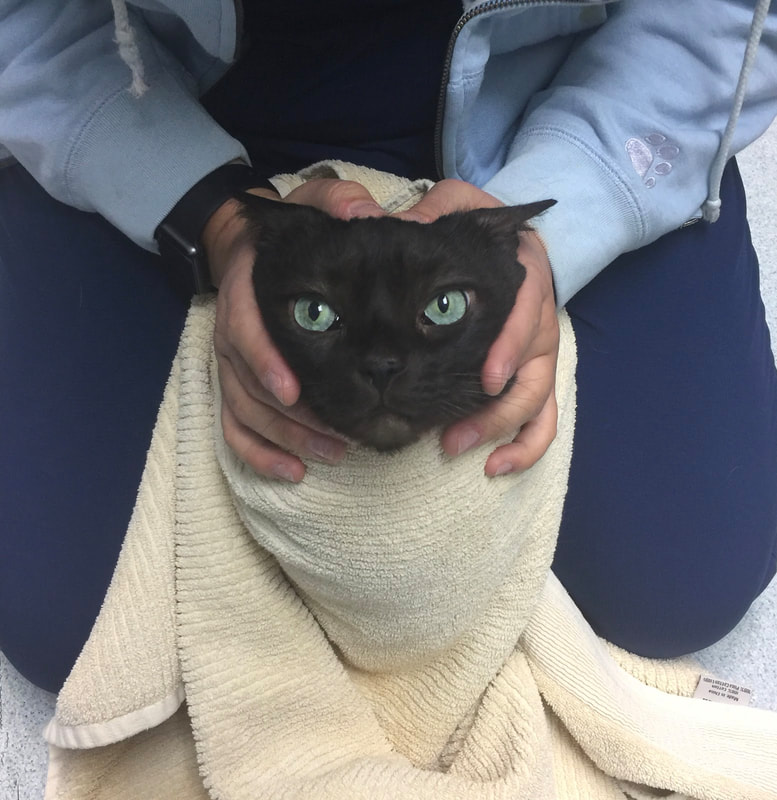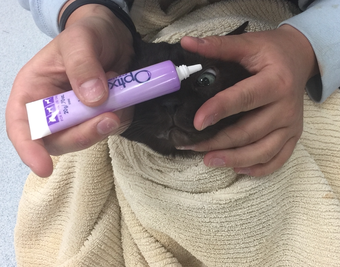How to give eye medication (video at end of page).
|
Administering Canine and Feline Eye Medication
By Carolyn Piche Administering eye medication to your pet is generally not very difficult, but requires care and a clean work space in order to be done properly. We hope these step-by-step instructions help to make the process easy and stress-free for you and your pet! Instructions:
|
Note: If you are applying eye drops and eye ointment, the drops should be applied before the ointment. If applying multiple medications, you should allow 5 minutes between applications to ensure that one medication doesn’t wash out the next. |
Note: Never allow the tip of the tube to touch the eye, eye lashes, or eye lid. In addition, you should never touch the tip of the tube with your fingers as these are all sources of contamination. |
For cats and small dogs: It is often helpful to wrap them in a blanket or towel, such that only their head is sticking out. If you have assistance, your helper should tuck the pet under their arm on a tall surface (counter, table, etc.). If you don’t have help, after wrapping in a towel, you can place your pet between your knees with their hindquarters backed against you, while kneeling on the floor. (See figure 2.)
|
Note: The ointment can blur your pet’s vision for a few minutes; it is best to not let them walk around and potentially injure themselves.References:
|
|
|
|



